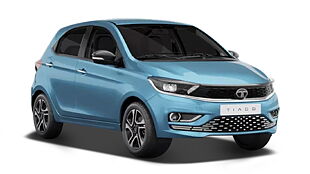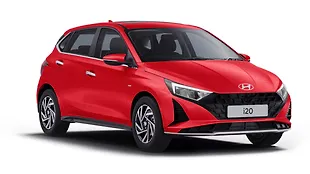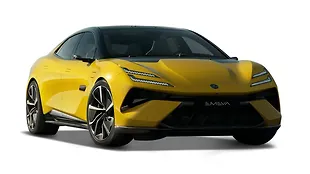Introduction

In part one of our series on Mahindra Reva, we got an in depth look into the mind of its founder and CEO Chetan Maini while the second part saw us shedding light on the Bengaluru-based automaker’s Formula E racing plans.
Now in the third part of our series, we have gone to the place where it all begins in the life of an e2o - the factory. We have managed to get a detailed look into how the little electric car is brought to life as well how the visions of Chetan Maini are slowly coming to life and defining the future of motoring.
Plant overview

The Mahindra Reva facility is located at the Bommasandra Industrial estate just outside of Bengaluru and is spread over an area of 4.2 acres. The facility was inaugurated by Anand Mahindra, chairman Mahindra&Mahindra in August 2012 and in addition to producing the e2o, the factory also has testing facilities.
The plant has the capacity to produce around 30,000 vehicles a month (in two shifts) but runs only a single one to meet with the current demand for the vehicle. Given the nature of what the company does, a lot of their production process has been adjusted to be as ecofriendly as possible which means a third of the electricity comes from sunlight while a lot of water is recycled. It is also one of the first automobile manufacturing facilities to be awarded a Platinum rating by the Indian Green Building Council.

It is significantly smaller than what you would expect of an automobile plant but then again so is the e2o. Jokes apart there is open space all around the plant which has been filled with green cover. Given that its sits in the middle of an industrial estate, this green cover makes the plant stand out among the other rows of white and blue buildings. The plant itself is a large grey structure sloping at both ends and contains the plant floor as well as the related offices.
The plant floor and assembly process
My first impression as I step onto the plant floor is that it’s a happy place to work in. Three out of the four walls are covered in large panes of translucent glass and given Bengaluru’s salubrious climate, the large doors on both sides are always open bringing in loads of fresh air and sunlight with the former being changed 16 times an hour using a gravity ventilation system.

The plant floor has been divided into multiple sections and the car is moved from point to point during the assembly process. The plant basically assembles the car from pre-fabricated structures, which means that the noise is kept down to a minimum. The loudest thing that I could hear was the pneumatic guns in action when the tiny wheels of the e2o were being fitted onto the body.

All work is done by hand, so there are always people on the floor making a professional but sociable environment to work in and that I believe is something that goes well with all the philosophies that Chetan dreamed off when he created the plant.
One of the features that our guide boasted to me about was the fact that Chetan Maini was against the idea of a paint shop on the plant premises. Thus each of panels that make up the e2o are, as the company likes to call it, pre-impregnated. This basically means they arrive already painted from the manufacturer eliminating the need for an environmentally adverse paint shop.

There is no manufacturing of any kind on the plant premises and so the car is assembled from prefabricated pieces and structures. They snake along a 16-stage assembly line where various parts are fitted onto the chassis. The body of this electric serpent stretches from the front entrance to the other side which opens out onto the test ground and backyard.
Testing and quality control

Once the assembly process is completed, the cars undergo a rigorous testing process to meet the company’s standards. This includes a dynamo-run, water testing and finally a full body inspection under high intensity lighting to ensure that there are no imperfections both inside and outside the car. Upon passing these tests the cars are signed by the head of quality control, which by the look of things personally passes each car that is produced at the plant.

A display of technology
After spending around an hour walking around, observing, photographing and attempting to ask some discreet but unsuccessful questions about some prototype electric vehicles lying around, I was led outside to the test track for a demonstration of the various technologies developed to use the e2o.

The first tech was a fast charging port dubbed ‘Quick2Charge’ which basically allows the owner to charge up the car to a 100 per cent battery in just an hour. The second technology was the standard wall charger which takes around five hours to bring the battery to full power. It is connected to the main power grid.

Finally, the most impressive one was the ‘Sun2Car’ technology. A proprietary system of the Bengaluru-based manufacturer, it is basically a solar-powered charger and costs around Rs 1.1 lakh to Rs 2 lakh to fit. The charger provides the required energy for charging the car as well as providing charge back to the main power grid. Mahindra Reva have installed a row of ‘Sun2Car’ umbrellas outside the main gate for its employees (who drive the e2os and Revas) to be able to connect and charge the cars.
With most of the visit completed, I was given a chance to sample the little e2o which turned out to be quite a fun thing as the car despite being bit low on power handles like a go-kart.
EV building for the future
The plant is expected to play host to the Mahindra Formula E team from 2016 once the regulations permit individual constructors to build their own machines. While Chetan did not give us detailed plans on how this would pan out, we believe that this facility will become an assembly and research base for the red and white team.

It currently works at a little more than half its capacity to keep in line with the demand for the car. However, with the EV becoming more and more prominent, it may just achieve optimum capacity faster than currently predicted. It is also one of the first automotive factories in India to get a platinum rating from the Indian Green Building Council.
The Mahindra Reva plant shows us what car building will be like when the electric revolution unleashes all its volts on society. We hope that such a setup will become a blueprint for what vehicle factories will be like in the future.

![Mahindra e2o [2014-2016] Image Mahindra e2o [2014-2016] Image](https://imgd.aeplcdn.com/272x153/cw/cars/mahindra/e2o.jpg?q=80)
![Mahindra e2o [2014-2016] Right Front Three Quarter Mahindra e2o [2014-2016] Right Front Three Quarter](https://imgd.aeplcdn.com/199x112/ec/75/70/10210/img/m/Mahindra-e2o-Right-Front-Three-Quarter-49196_ol.jpg?v=201711021421&q=80)
![Mahindra e2o [2014-2016] Right Front Three Quarter Mahindra e2o [2014-2016] Right Front Three Quarter](https://imgd.aeplcdn.com/199x112/ec/75/70/10210/img/m/Mahindra-e2o-Right-Front-Three-Quarter-47005_ol.jpg?v=201711021421&q=80)
![Mahindra e2o [2014-2016] Right Rear Three Quarter Mahindra e2o [2014-2016] Right Rear Three Quarter](https://imgd.aeplcdn.com/199x112/ec/75/70/10210/img/ol/Mahindra-e2o-Right-Rear-Three-Quarter-47008.jpg?v=201711021421&q=80)
![Mahindra e2o [2014-2016] Dashboard Mahindra e2o [2014-2016] Dashboard](https://imgd.aeplcdn.com/199x112/ec/75/70/10210/img/ol/Mahindra-e2o-Dashboard-47134.jpg?v=201711021421&q=80)
![Mahindra e2o [2014-2016] Steering Wheel Mahindra e2o [2014-2016] Steering Wheel](https://imgd.aeplcdn.com/468x263/ec/75/70/10210/img/ol/Mahindra-e2o-Steering-Wheel-47132.jpg?v=201711021421&q=80)


























